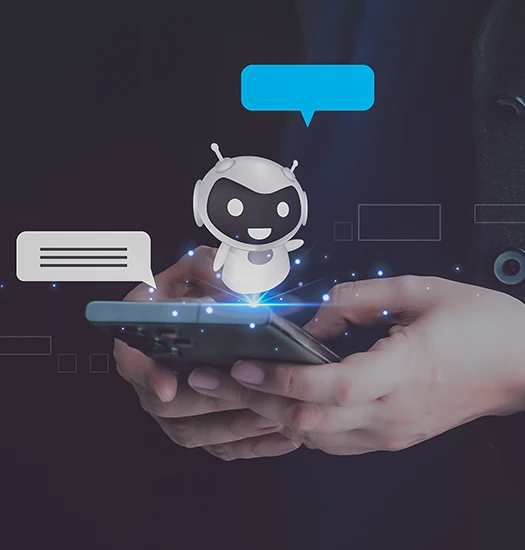Data Science is a general term that encompasses data collection, storage, organization, preparation and management. The goal is to maintain data groups to extract meaning that allows for guidance of business processes and attainment of organizational goals. A data strategy must be established to do this. Because it will orient data management across the organization, it should consider various factors, such as:
- Collection: Creation of a model for data collection methodologies;
- Management: Structuring, security, integrity and updating of information stored in databases;
- Governance: Management of policies, processes, people and technologies, in order to structure information assets within the organization;
- Data access and control;
- Privacy and security.
And what is Artificial Intelligence? The goal of Artificial Intelligence (AI) is to allow machines to replicate human intelligence to understand and act as a person would. Because human thought works according to certain rules, these rules can be codified and used in algorithms to teach machines based on experience. There are three types of AI, the first being a real application, the second theoretical and the third just a concept: Artificial Narrow Intelligence (ANI) This type of AI systems makes Machine Learning possible, with the help of large volumes of data stored as a reference for future problems. They are very similar to how humans function and can resolve specific questions and tasks. Oftentimes they even outperform humans, but only in a controlled environment with limited parameters. Some of these types of AI systems are very familiar to consumers, such as virtual assistants. Artificial General Intelligence (AGI) With the goal of achieving a level of cognition equal to humans in several areas, such as processing language and images, reasoning and computational functioning. However, although it is already used on supercomputers, for example, that are capable of simulating the activity of eight million neurons and solving questions thousands of times faster and 10,000 times more efficiently than conventional CPUs, there is still a wide gap to span in relation to the human brain, which has 16 types of a total of 86 billion neurons. Artificial Super Intelligence (ASI) It is supposedly capable of surpassing human abilities in practically every field. From making rational decisions to making art and building emotional relationships. So what is Machine Learning? Machine Learning is a subset of Artificial Intelligence, allowing machines to learn from experience, instead of just following instructions, so that they can produce exact results. There are four types of learning: Supervised learning The algorithm operates based on a specific set of labeled data so that it can compare the results with this data and modify its model to be more precise. Unsupervised learning The algorithm makes inferences based on the characteristics of unlabeled training data to find patterns. A rationale is built to describe these patterns and arrive at a result. Semi-supervised learning The algorithm uses a limited set of labeled data to define the rest of the data in order to arrive at a result. This means that large data sets do not need to be labeled. Reinforcement learning Through a process of trial and error, the algorithm is rewarded or penalized for actions executed, which helps to shape its future behavior and does not require explicit instructions. Data Science, Artificial Intelligence and Machine Learning work together to explore data in order to obtain a variety of commercial benefits. Artificial Intelligence can be applied to myriad areas, such as sales of products and services, manufacturing, human resources and even in health care. For example:
- Retail chains – predict behavior, increase sales opportunities, reduce risks and make more assertive choices;
- E-commerce – improve customer recommendations and user survey results, chatbot service, and filter spam and comments;
- Finance – identify good customers, minimize costs and get better results for your products;
- Insurers – gain more predictability and agility in decisions to bolster results;
- Health – maximize efficiency in administrative tasks, perform assisted diagnoses, monitor physical and emotional signs, perform robotic surgeries;
- Human Resources – analyze employee data and place employees on the right teams, delegate projects based on competencies, analyze resumes;
Atento uses Data Science and Artificial Intelligence to assess behavior and feelings and predict consumer needs, with the overriding goal of improving the consumer experience and consequently resulting in returns on business for companies.
Bruno Silveira Gardel, Head of Data Science at Atento Brasil, explains that these technologies – digital capabilities found in the companies deliverables – means that predictive models can be created to improve business efficiency by offering fast and more accurate solutions based on the ability to understand consumer feelings and predict consumer behavior, using analysis and cross-referencing of deconstructed data. Use of this type of digital capacity allows for increased satisfaction and even prevents complaints from taking on a larger dimension and ending up going to the ombudsman or even a regulatory agency. Atento applies these capabilities to a variety of deliverables. One example is our business efficiency models. “We carry out a demographic and behavioral analysis of their customers to find out what they should do next and improve product recommendations, for instance. The more data there is, the more efficient the system will be, and it is also enhanced by the results obtained. The goal is to increasingly understand consumer needs, the point of the journey they are at, and serve them more and more quickly,” says Bruno. Another product is the Stress-o-meter, which assesses someone’s emotional state in terms of both voice and text messages, based on processing of natural language, tone of voice, typing speed, use of certain positive and negative words, proximity between words, etc. This is how Atento builds a new customer service journey, with more appropriate channels, more precise and cohesive language, and automation of processes that simplify service and offer better results in customer relations.


